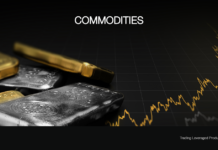- BoE’s Governor Bailey speech (GBP, GMT 10:00)
- Gross Domestic Product (JPY, GMT 23:50) – Gross Domestic Product should remain steady in Q4 and reveal headline growth of 12.8% y/y and 3% q/q.
Tuesday – 9 March 2021
- Gross Domestic Product and Employment change (EUR, GMT 10:00) – German GDP growth was unexpectedly revised up to 0.3% q/q in the final reading for Q4 2020 – from 0.1% q/q reported initially. Still a sizeable contraction, but a much better result than developments in the EU as a whole. Not surprisingly consumption was hit severely by virus developments and the return of stay-home-orders at the end of last year. Hence, the preliminary Q4 reading for Eurozone should be steadied to -0.6% q/q and -5.0% y/y. The Eurozone’s employment change, however, is anticipated to dip at 0.3% q/q in the Q4 with an overall reading at -2.0% y/y.
- RBA’S Governor Lowe speech (AUD, GMT 22:00)
Wednesday – 10 March 2021
- Consumer Price Index (CNY, GMT 01:30) – Chinese inflation is expected to decline in February at 0.4% m/m from 1.0% last month, with the headline at -0.4% y/y.
- Consumer Price Index (USD, 12:30) – The US January CPI is expected to gain in February to 0.4% for the CPI headline and a 0.2% for the core, following a 0.3% gain for the headline and flat for the core in January. CPI gasoline prices look poised to rise 6% in February, leaving a tailwind for the headline. As-expected February figures would result in a 1.7% headline y/y increase, following a 1.4% pace in December. Core prices should show a 1.4% y/y rise, steady from January.
- Interest Rate Decision and Statement (CAD, GMT 15:00) – The BoC is expected to hold rates steady at 0.25% as its extraordinary forward guidance remained in place as anticipated. BoC maintains the low for long policy pledge, reiterating that the economy will “continue to require extraordinary monetary policy support.” They hold the policy rate at the effective lower bound until slack is absorbed and the 2% inflation target is sustainably achieved — which is still seen happening in 2023.
Thursday – 11 March 2021
- Interest Rate Decision, Statement and Conference (EUR, GMT 12:45-13:30) –Comments from ECB officials over recent days have backed the view that the central bank will leave policy settings unchanged at next week’s council meeting. President Lagarde may deliver a dovish presser and remind markets once again that the enhanced PEPP program offers a considerable degree of flexibility, but at the same time, is likely to re-affirm the central scenario of strengthening growth in the second half of the year. Indeed, updated staff projections are unlikely to bring major revisions and on the inflation front could actually come in a tad higher than in December – at least for this year, as cost pressures in supply chains are building.
- Initial Jobless Claims (USD, GMT 13:30) – Last week, US reports revealed a 9k initial claims rise to 745k into the final week of February that likely reflected a modest boost from the polar vortex and Texas freeze, alongside a big continuing claims drop of -124k to a modestly weaker than assumed 4,295k The insured jobless rate fell to a 3.0% new cycle-low from a 3.1 prior cycle-low.
Friday – 12 March 2021
- Industrial and Manufacturing Production (GBP, GMT 07:00) – Industrial and Manufacturing Production are expected to have fallen, with both providing a downwards contribution of -0.2% m/m and -0.3% m/m in January.
- Harmonized Index of Consumer Prices (EUR, GMT 07:00) – The German prelim. HICP inflation for February is anticipated to remain unchanged at 0.6% m/m. Germany is likely to post above average inflation and risks fresh bubbles in house prices down the line.
- Labour Market Data (CAD, GMT 13:30) – Canada employment plunged -212.8k in January, with the part-time employment at -225.4K. For February the employment should revealed a 47.5k drop in jobs, with unemployment drifting to 8.9%
- Michigan Index (USD, GMT 15:00) – US consumer sentiment declined -2.2 to 76.8 in the final February read (76.2 preliminary) versus January’s 79.0 print. It is the lowest since August. Most of the weakness was in the expectations component which fell to 70.7 (69.8 preliminary) from January’s 74.0. The current conditions index was little changed at 86.2 (86.2 preliminary) versus January’s 86.7. The 12-month inflation gauge for February rose to 3.3% (3.3% preliminary), and ties highest since August 2012, after jumping to 3.0% in January from 2.5% in December. The 5-year index was unchanged at 2.7% (2.7% preliminary) versus 2.7% in January. It ties for the highest going back to July 2015.
Click here to access the our Economic Calendar
Andria Pichidi
Market Analyst
Disclaimer: This material is provided as a general marketing communication for information purposes only and does not constitute an independent investment research. Nothing in this communication contains, or should be considered as containing, an investment advice or an investment recommendation or a solicitation for the purpose of buying or selling of any financial instrument. All information provided is gathered from reputable sources and any information containing an indication of past performance is not a guarantee or reliable indicator of future performance. Users acknowledge that any investment in Leveraged Products is characterized by a certain degree of uncertainty and that any investment of this nature involves a high level of risk for which the users are solely responsible and liable. We assume no liability for any loss arising from any investment made based on the information provided in this communication. This communication must not be reproduced or further distributed without our prior written permission.



















